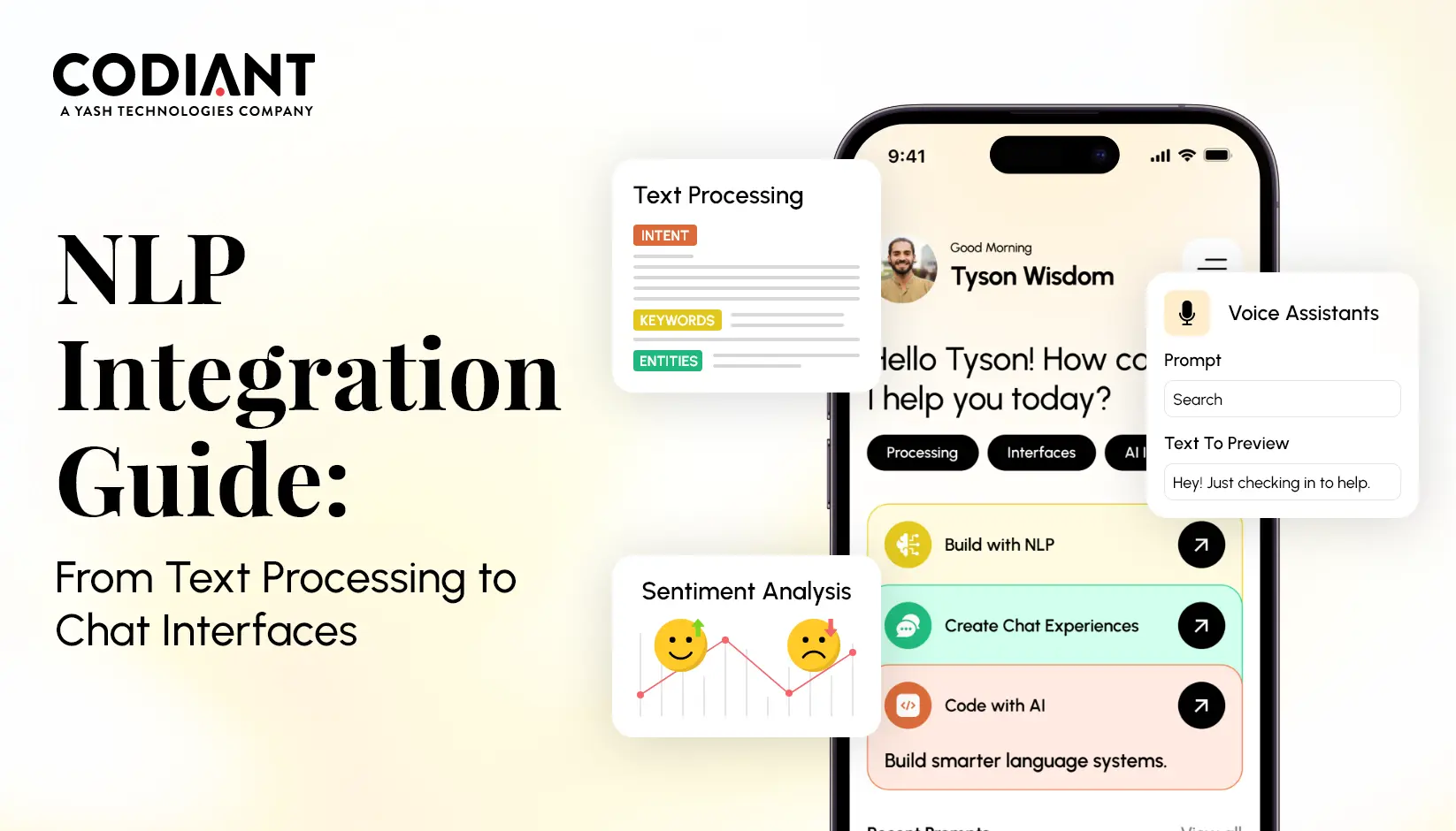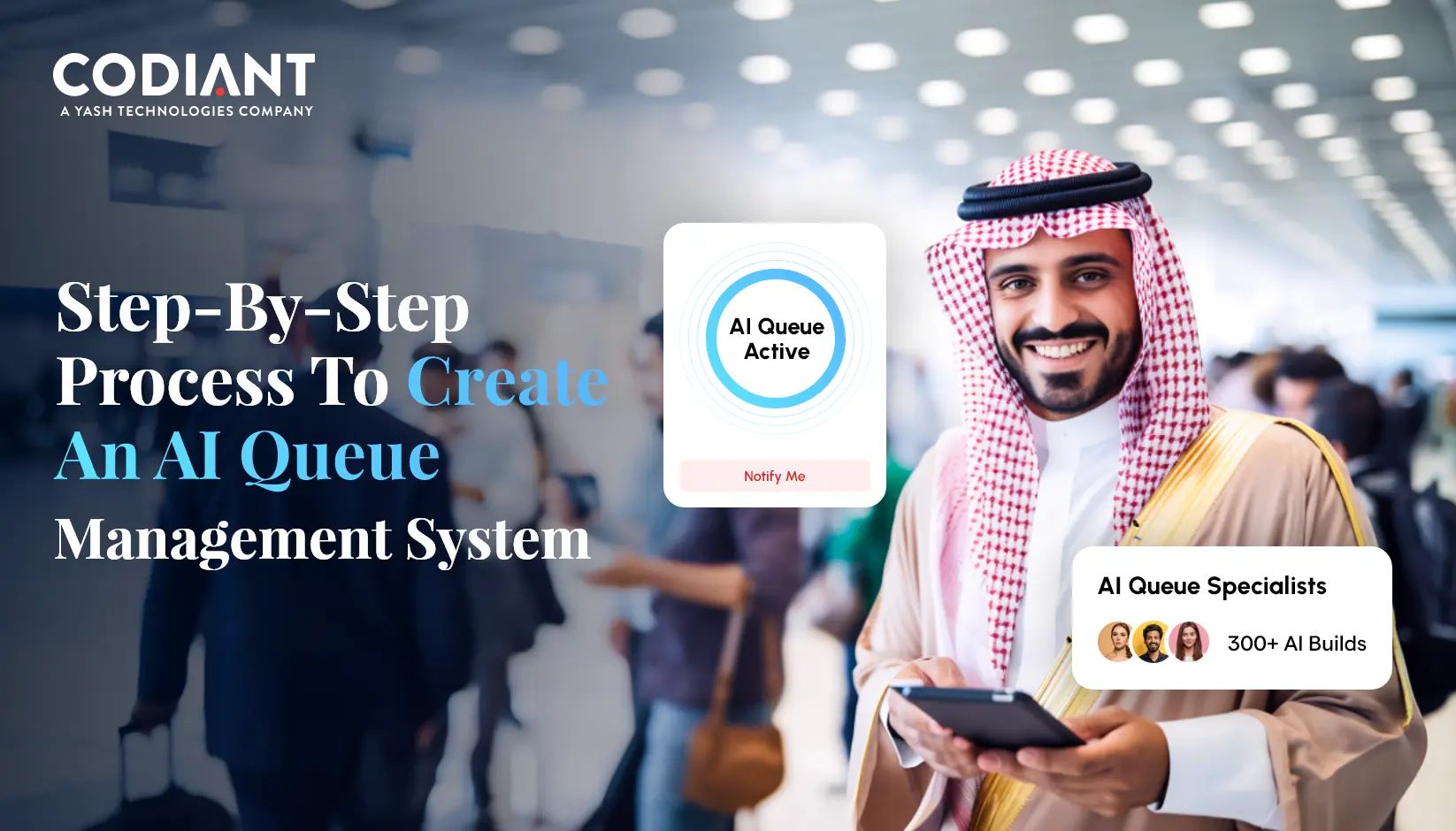How To Develop a Restaurant Management System?
Table of Contents
Subscribe To Our Newsletter

Did You Know? 90% of the restaurants have their own software system that streamlines the process of food order, delivery, payment, inventory, and a lot more!
Owing a restaurant is a hard-hitting chore. It comes with several domain-typical challenges and process uncertainties that can be addressed to many levels using “Restaurant Management System”. A reliable Restaurant Management System can manage staff, food ordering requests, payment processing, and delivering food effortlessly.
Key Highlights for Restaurant Management System:
- Restaurant Management System can improve order management by handling both grocery and pickup orders. Track order status and integration with online ordering platforms.
- Inventory management is made easier with RMS, allowing restaurants to monitor stock levels. Track expiration date and automate purchase orders.
- RMS helps in scheduling staff by creating and managing schedules. Manage time and attendance meetings and facilitate the salary payment process.
- Using RMS, it is simple to manage finance! It allows restaurants to track sales, expenses, and profits, generate reports, and manage payroll and taxes.
- RMS can help restaurants build better relationships with customers by using customer information, offering rewards, and providing good service.
Top Features of Restaurant Management System
A fully functional RMS typically comprises several critical features. The system can be built with these modules depending on the restaurant’s requirements.

1. Order Management
Order management is at the core of any restaurant management system. This feature allows staff to put customers’ orders into the system directly, thereafter it is sent to the kitchen for preparation.
Modern systems include:
- Table-side ordering using tablets or mobile devices.
- Kitchen display systems that automatically update with incoming orders.
- Order modifications, such as special requests or allergen suggestions.
2. Reservation Management
An effective reservation system allows customers to book tables online or over the phone, ensuring proper utilization of seating capacity and minimizing wait times.
Key functionalities include:
- Table availability view in real time.
- Customer notifications for reservation confirmations and reminders.
- Automated table assignment to optimize restaurant seating.
3. Inventory Management
Maintaining a well-managed inventory is critical to decrease waste, increase operational efficiency, and ensure profitability. This also decreases the chances of stockouts and excess costs—something a robust restaurant management app can simplify through automated tracking and alerts.
This feature helps:
- Track stock levels of food ingredients and supplies.
- Set automated reordering alerts when inventory is low.
- Integrate with leading suppliers for smooth restocking.
4. Staff Management
The RMS manages staff scheduling, time tracking, and payroll, simplifying operations by improving workforce allocation, reducing admin tasks, boosting productivity, and ensuring timely, accurate payroll processing.
Major aspects include:
- Staff shifts scheduling with break time and overtime tracking.
- Reporting to monitor productivity and customer service levels.
- Role-based access controls to protect sensitive information.
5. Payment Processing
The RMS should accept different payment methods to offer flexibility and convenience for enhancing overall food ordering experience. This helps attract more customers, reduce cart abandonment, and boost sales as well.
It can process various payment methods including:
- Credit cards, digital wallets, and cash.
- Splitting bills across multiple payers.
- Tipping management for easy allocation.
6. Customer Relationship Management
CRM in restaurant management system helps to build loyalty and keep valuable customers. It focuses on personalized experiences, timely communication, rewards programs, and consistent service to encourage trust and repeat business.
RMS can include CRM capabilities such as:
- Customer profiles with preferences and order history.
- Loyalty programs offering rewards and discounts.
- Feedback collection for continuous improvement.
6. Reporting and Analytics
Restaurant owners need to collect performance indicators to make data-driven business decisions. It helps improve performance, customer satisfaction, and profits.
RMS should provide:
- Sales reports show daily, weekly and monthly trends.
- Inventory performance reports to analyze waste and optimize procurement.
- Information about customer satisfaction from feedback and surveys.
Also Read: Bakery Apps Features and Business Model
Steps to Build Restaurant Management System
Here is a step-by-step guide to develop a restaurant management system. Have a look:

1. Know Your Specific Requirements
Summarize the precise needs of your restaurant before you initiate the RMS development process. You should consider the following aspects:
- Basic Functions: An RMS should have fundamental functionalities including order taking, inventory management, staff scheduling, reporting, payment processing, and customer relationship management.
- Cost-Effectiveness: The most important factor is the cost! Set a realistic budget for development and maintenance.
- Integration: If you want to integrate your RMS with existing system like Point of Sale (POS) terminals or accounting software to improve the entire process.
- Scalability: Determine if your software system is steadfast enough to handle a greater number of customers with the business expansion over time.
2. Pick the Right Technology Stack
The technology stack you choose affects system performance, scalability, and maintenance. It also impacts development speed, updates, integrations, and user experience, making it a key decision for long-term success. Consider these factors:
- Programming Languages: Widespread choices include Python, Java, Ruby, and C# for developing software. These languages are flexible, have strong community support, and can efficiently manage complex RMS.
- Framework: Django, Rails, or Laravel are the best frameworks that can accelerate development, offering built-in tools and libraries, minimizing errors, and supporting the scalability of your RMS.
- Database: MySQL, PostgreSQL are relational databases! These are often suitable to store restaurant data, ensuring seamless storage and retrieval of restaurant information like orders, customers, and inventory.
- Cloud Platform: AWS, Azure, and GCP are great cloud services that support scalability and flexibility.
3. Design Appealing User Interface (UI)
A user-friendly interface is important for dining staff efficiency. Make sure the design is simple, attractive, and easy to use, with clear buttons, fewer steps, and works well on all devices like tablets and smartphones. Pay attention to:
- Layout: Organize elements logically for easy access and efficient navigation throughout the entire user interface.
- Color Scheme: Select colors that look good, improve readability, and create a welcoming atmosphere.
- Font Size and Style: Choose easy-to-read fonts for all devices to ensure clarity and a professional look in all formats.
- Mobile Responsiveness: Make the UI accessible on smartphones and tablets for a smooth experience, no matter the device.
4. Develop Core Features
Create the main features of your RMS, including order management, reservation handling, inventory tracking, staff scheduling, and payment processing, to provide a complete solution for running a restaurant. Focus on core functionalities:
- Order Management: Enable staff to take orders, change them, and track their status to ensure fast service and reduce errors for a better customer experience.
- Resource Scheduling: Make schedules, assign shifts, and track attendance to ensure enough staff while considering their availability and preferences for job satisfaction.
- Inventory Management: Track stock levels, manage suppliers, and set reorder points to avoid shortages, simplify ordering, and keep inventory at the right levels for smooth operations.
- Payment Processing: Connect with payment gateways to accept multiple payment methods. It facilitates customer service and ensures secure transactions for in-person and online orders.
5. Test Thoroughly
Thoroughly test your restaurant application to find and fix bugs before deployment. It is good practice to test the software in different situations to make sure it is working well, easy to use, and highly secure. Consider the following factors:
- Unit Testing: Test individual system components to make sure each component functions well and detect issues early in the development process.
- Integration Testing: Test how different components interact with each other and result in smooth communication, identify integration issues, and confirm right data flow all through the system.
- System Testing: Test the entire system in various scenarios to evaluate performance, functionality, and security. It ensures that all systems components are working optimally and meeting requirements.
- User Acceptance Testing (UAT): Involve your staff in testing to gather feedback on usability and functionality, adjusting enhance user experience and satisfaction before the final launch.
6. Deploy and Maintain Software
Once your RMS is set up, use it in your restaurant. Keep checking how well it works. If there are problems, fix them right away. This will make sure your RMS works smoothly and doesn’t cause any issues for your restaurant. Consider these factors:
- Security: Use robust security measures such as strong passwords, encryption, and regular security checks to keep your data safe.
- Updates: Keep your system updated regularly to fix issues and add new features, ensuring it stays secure and up to date.
- Support: Provide ongoing support to your staff to ensure they can use the system effectively. This may include training, documentation, and troubleshooting assistance.
Wrapping Up
By following these steps, you can create a restaurant management system that streamlines operations, boosts efficiency, and enhances customer experience. Investing in staff training and using feedback will equip your team to effectively utilize the system. It allows restaurant owners to focus on what they do best – providing exceptional food and service. Many owners also explore digital solutions to build food catering apps that expand their service offerings and customer base.
Frequently Asked Questions
Restaurant Management System is a software that allows restaurant owners and staff members to handle different operations effectively. It comes with great features including order management, inventory management, table reservations, and billing. All these features are designed and embedded in the software to improve the customer experience.
When choosing an RMS, look for critical features such as:
- Order Management: To streamline the order process from taking orders to delivery.
- Table Management: For effective seating and reservation handling.
- Inventory Management: To track stock levels and reduce waste.
- Payment Processing: To facilitate various payment methods.
- Reporting and Analytics: To gain insights into sales, customer behavior, and operational performance.
The development time for an RMS can vary based on complexity and features. Typically, it can take anywhere from a few weeks to several months. Factors that affect the timeline include customization needs, the number of features, and testing phases.
Investing in a restaurant management system can make your restaurant run more smoothly. It helps prevent mistakes with orders, speeds up billing, keeps track of inventory, and gives useful information about sales and customer preferences. This leads to better service and higher profits.
No, most modern Restaurant Management Systems are designed with user-friendly interfaces, making them easy to navigate for non-technical users. However, some basic training might be necessary for staff to familiarize themselves with the system’s functionalities.
Most RMS providers offer ongoing support, including technical assistance, software updates, and training resources. You can typically access customer support through various channels, such as phone, email, or live chat, ensuring you have help whenever you need it.
Featured Blogs
Read our thoughts and insights on the latest tech and business trends
Integrating NLP Into Your Existing App: From Text Analytics to Conversational Interfaces
- December 29, 2025
- Artificial Intelligence
Natural Language Processing has moved from a niche capability to an essential part of modern software, and 2025 has clearly shown its impact. Businesses are no longer rebuilding entire systems to keep up with user... Read more
How to Build an AI-Powered Queue Management System in Dubai, UAE
- December 25, 2025
- Artificial Intelligence
Dubai has been steadily moving toward faster, more efficient public and private services, and this shift has increased the need for systems that reduce waiting time and improve customer flow. With rising footfall across government... Read more
How Year-End Engagements with a Dedicated Dev Team Can Accelerate Your 2026 Roadmap at a Lower Cost
- December 18, 2025
- Staff Augmentation
In a Nutshell Year-end is the strongest window to add development capacity, clear backlogs, and prepare your 2026 roadmap without overwhelming in-house teams. Dedicated development teams accelerate delivery, reduce sprint delays, and help companies ship... Read more





